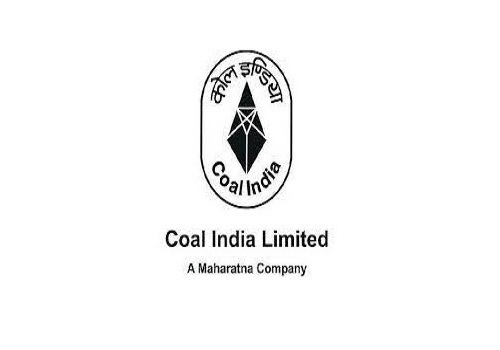Oil And Gas Sector Update - Geopolitical tensions buoy crude price; ONGC and GAIL key beneficiaries By JM Financial

Follow us Now on Telegram ! Get daily 10 - 12 important updates on Business, Finance and Investment. Join our Telegram Channel
Geopolitical tensions buoy crude price; ONGC and GAIL key beneficiaries
Brent crude price has spiked to +USD 90/bbl on worries that if Russia invades Ukraine it could trigger sanctions on the former, which could disrupt its energy exports – Russia is the world’s largest producer of crude at ~10mmbpd. Further, a gradual recovery in global oil demand due to easing of covid restrictions coupled with slower-than-expected hike in OPEC+ monthly output has tightened the global oil demand-supply balance. However, the oil market is likely to return to surplus in CY22 led by output growth in US shale (incentivied by sharp rise in crude prices) and OPEC+ output hikes.
We reiterate BUY on ONGC (TP INR 230), Oil India (TP INR 300) and GAIL (TP INR 185) as they are the key beneficiaries of rising crude prices. Every USD 1/bbl rise in crude price results in a 2-4% increase in our valuation of ONGC and Oil India. Moreover, higher crude price improves the earnings visibility for GAIL’s gas trading and downstream businesses. ONGC and Oil India will also benefit from the likely jump in domestic gas price in FY23.
IEA maintains CY22 oil demand growth estimate at 3.2mmbpd; highlights the rise in global oil demand due to sustained high global gas prices:
The IEA, in its Jan’22 Oil Market Report, has reiterated that CY22 global oil demand is expected to rise by 3.2mmbpd (to 100.6mmbpd). Further, it has highlighted the likely rise in oil demand due to fuel switching given sustained high global gas prices – Europe oil demand is seen increasing by 250-300kbpd in 4QCY22. However, IEA has re-assessed its historical data, which has resulted in an upgrade to its historical demand estimates by ~0.8mmbpd - primarily for Saudi Arabia (in LPG use) and China (in petchem) – though growth rates are unchanged. (Exhibit 1-2)
* OPEC+ output hike continues to significantly lag targeted 0.4mmbpd monthly hikes, further tightening the market:
In Jan’22, OPEC’s output was at 28.1mmbpd – up only by 130kbpd MoM vs. targeted hike of 250kbpd. Output rose in Saudi Arabia (up 90kbpd at 10.1mmbpd) and UAE (up 50kbpd to 2.9mmbpd); but declined in Libya (down 60kbpd MoM to 990kbpd) and Venezuela (down 120kbpd MoM to 680kbpd). Hence, OPEC compliance rose to 129% in Jan’22 while OPEC+ compliance was at 127%. Consequently, the gap between OPEC+ output and its target hike has risen to 0.9mmbpd in Jan’22, further tightening the demand-supply balance (Exhibit 4-5).
* OECD oil inventory continues to fall:
By end-Dec’21, OECD oil inventory declined 60mmbbl MoM to 2,680mmbbl, a 7-year low and down 255mmbbl below the 5-year average; preliminary data for Jan’22 shows inventory fell by a further 14mmbbl MoM (Exhibit 3).
* Oil market to return to surplus led by output growth in US and OPEC+ output hikes:
Oil output from non-OPEC+ countries is expected to rise by 2.0mmbpd in CY22, with US accounting for 1.2mmbpd or ~60% of the growth (aided by Canada and Brazil). EIA expects US crude output to grow to 12.0mmbpd in CY22 and to 12.6mmbpd in CY23 (vs. 11.2mmbpd in CY21). (Exhibits 7-8). Hence, global oil supply could rise by 6.3mmbpd in CY22 (vs. 1.5mmbpd rise in CY21) assuming that OPEC+ output rises by 4.3mmbpd once the output cut is fully reversed. This will reduce OPEC+ effective spare capacity to 2.5mmbpd in 2HCY22, held primarily by Saudi Arabia and UAE. The call on OPEC crude is estimated at 28.5mmbpd in CY22 (vs. 28.4mmbpd in CY21).
* ONGC, Oil India and GAIL are key beneficiaries of high crude prices:
We reiterate BUY on ONGC (TP INR 230), Oil India (TP INR 300) and GAIL (TP INR 185) as they are the key beneficiaries of rising crude prices. Every USD 1/bbl rise in crude price results in an increase in our valuation of ONGC and Oil India by 2-4% (Exhibit 10-11). Moreover, higher crude price improves the earnings visibility for GAIL’s gas trading and downstream businesses, which constitutes 40-50% of GAIL’s EBITDA (Exhibit 12). Further, as per our calculations, the domestic gas price is likely to jump sharply to +USD 6.5/mmbtu in 1HFY23 and to ~USD 9.0/mmbtu in 2HFY23 (Exhibit 13). As highlighted in our Sep’21 note, higher domestic gas price is positive for gas producers - ONGC and Oil India; every 10% hike in domestic gas price has a positive impact of 2-5% on ONGC and Oil India’s valuation (Exhibit 14-15).
To Read Complete Report & Disclaimer Click Here
Please refer disclaimer at https://www.jmfl.com/disclaimer
CIN Number : L67120MH1986PLC038784
Above views are of the author and not of the website kindly read disclaimer












 320-x-100_uti_gold.jpg" alt="Advertisement">
320-x-100_uti_gold.jpg" alt="Advertisement">












